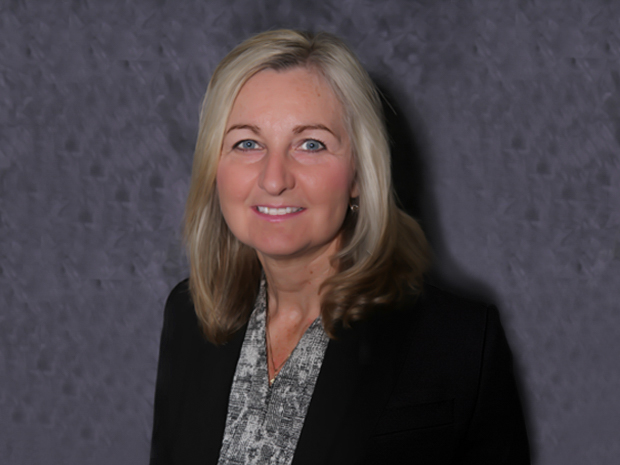Taxpayers need to consider how retirement plan distributions impact their overall estate plan
Key takeaways
Taxpayers should understand RMD rules to avoid potential penalties for failure to withdraw timely
Employers will need to update their retirement plans to incorporate RMD changes in SECURE 2.0
The SECURE 2.0 Act of 2022 (SECURE 2.0), signed Dec. 29, 2022, makes significant changes to retirement legislation with focus on increasing retirement savings for employees and individual retirement account (IRA) owners. One of the major areas of focus in the new law is reforming required minimum distributions (RMDs). RMDs are minimum amounts that a retirement plan account owner or IRA owner must withdraw annually. The original SECURE ACT, the Setting Every Community Up for Retirement Enhancement Act of 2019 (SECURE 1.0), which became law on Dec. 20, 2019, had also made major changes to the RMD rules.
Prior to SECURE 1.0, an RMD was required to begin for the retirement account owner or IRA owner in the year in which the owner turned 70½. However, for the first RMD, the owner was allowed to defer that to no later than April 1 of the following year. That April 1 date is called the “required beginning date.” Delaying your first distribution to the following April 1st does require receiving your first two RMDs in the same tax year. Following the enactment of SECURE 1.0, the age to begin RMDs was increased to 72. For example, if you turn 72 in 2022 or later you are allowed to take your first RMD anytime from January 1 of the year you turn 72 until April 1st of the following year. For all future years, each year’s RMD would be required by December 31 of that year.
In addition to the change in the required beginning date to April 1 of the year following the year in which the retirement plan or IRA owner turns 72, SECURE Act 1.0 changed the payout rules for named beneficiaries. Under SECURE 1.0, named beneficiaries can fall into three categories:
- Designated beneficiaries (DB)
- Eligible designated beneficiaries (EDB)
- Non-designated beneficiaries (NDB)
A DB is any individual, whereas an EDB is a defined subset of certain individuals and trusts and an NDB is a non-individual. An EDB includes: (1) a spouse, (2) minor children (until age 21) of the deceased account owner; (3) individuals not more than 10 years younger by date of birth; and (4) disabled or chronically ill individuals and certain trusts.
SECURE 1.0 changed the rules for a DB who inherits from a retirement or IRA owner dying after Dec. 31, 2019. With limited exceptions, the legislation requires a DB to take complete distributions of the benefits by the end of the year containing the tenth anniversary of the account owner’s death, regardless of whether the account owner died before or after their required beginning date. However, proposed IRS regulations required the DB to continue to take distributions at least as rapidly over the longer of (1) the account owners remaining life expectancy or (2) the beneficiary’s life expectancy, with full distribution by December 31 of the year containing the tenth anniversary of the account owner’s death.
The proposed regulations requirement for “at least as rapidly” distributions caught many taxpayers by surprise with the expectation that no distributions were required prior to the end of the tenth calendar year following the calendar year of the employee’s death. This interpretation by the proposed regulations resulted in some taxpayers not taking an RMD for 2021 and being unsure if they were required to take an RMD in 2022. Notice 2022-53 provided transition relief for taxpayers who inherited an IRA as a DB and did not take a RMD – referred to in the notice as “specified RMDs” for 2021 and 2022 when required. Under the transition relief, a defined contribution plan or IRA that failed to make a specified RMD will not be treated as having failed to satisfy section 401(a)(9) for the 2021 or 2022 calendar years because it did not make the distribution(s). The IRS will not assess the 50% excise tax for failure to make the RMD. Note that no such relief currently exists for 2023 RMDs.
RMDs for EDBs, other than spouses, depend upon whether the owner dies before or after his or her required beginning date. If death occurs before this date, the non-spouse EDB would be paid over the beneficiary’s life expectancy. The non-spouse EDB may elect to receive the funds under the 10-year rule instead of the life expectancy rules. If death occurs after the required beginning date, the non-spouse EDB must begin taking RMDs by December 31 of the year following the year of death. The RMD may be paid over the longer of the (1) account owner’s remaining life expectancy, or (2) the beneficiary’s life expectancy using the Single Life Table. If the EDB is a minor child, these rules apply, however, the full account balance must be distributed by the end of the year in which the child attains age 31.
An NDB is a decedent’s own estate, any charity named as a beneficiary, and any trust that does not qualify as a designated beneficiary. If the beneficiary is an NDB, the provisions of SECURE 1.0 do not apply, the prior RMD rules continue to apply. The RMD rules depend upon whether the owner died before or on or after the required beginning date. If the owner’s death occurs prior to the required beginning date, the distribution must be completed by December 31 of the fifth year after the owner’s death, with no annual distribution requirement. If the owner’s death occurs after the owner’s required beginning date, the NDB calculates the required distributions using the owner’s non-recalculated life expectancy under the Single Life Table using the owner’s age on December 31 in the year of death.
Roth IRAs do not require withdrawals until after the death of the owner. The date of death of the owner becomes the Required Beginning Date. If the beneficiary is a DB, the full distribution is required by December 31st of the year containing the tenth anniversary of the account owner’s death. The DB is not required to take any distributions prior to the tenth year as there is no “at least as rapidly” rule for Roth account balances.
Further changes under SECURE 2.0
The passage of SECURE 2.0 on Dec. 29, 2022. once again made changes to the RMD rules. The RMD age was changed to age 73 for persons attaining age 72 after Dec. 31, 2022, age 73 before Jan. 1, 2033; and age 75 for persons attaining age 74 after Dec. 31, 2032. Age 72 is retained for persons attaining age 72 in 2020 through 2022 and age 70½ for person attaining age 70½ prior to 2020. The change is effective for RMDs after Dec. 31, 2022, for individuals who attain age 72 after that date.
There is an apparent drafting error in the law. Individuals born in 1959 will turn 73 before Jan. 1, 2033, and they would seem to have to begin taking RMDs in 2033. However, those same persons born in 1959, will also attain age 74 after Dec. 31, 2032 – that would suggest that they would not have to begin RMDs until they attain age 75. We can expect either Congress to adopt a technical correction or IRS to provide further guidance as to which age RMDs will begin for these individuals.
No taxpayers will have their first RMD in 2023. Anyone born in 1950 turned 72 in 2022, and such a person had to begin taking RMDs in 2022. However, anyone born in 1951 turns 72 in 2023 and will not have to begin taking RMDs until they attain age 73 in 2024.
SECURE 2.0 also removed the disconnect on the RMD rules between Roth IRAs and qualified plan Roth accounts. Before SECURE 2.0 qualified plan Roth accounts were subject to RMDs during the plan participant’s life. Now as with Roth IRAs, RMDs are not required from such accounts until the plan participant dies.
Congress has also reduced the penalty for failure to take an RMD from 50% of the amount required to be withdrawn during the year to 25%, and further to 10% if corrected within two years.
Finally, SECURE 2.0 now permits sole designated surviving spouses to elect to treat the deceased spouse’s qualified plan accounts (e.g., a 401(k) plan) as their own for purposes of the RMD. Prior to the change, the rule only applied to IRAs.
Takeaways and reminders.
SECURE 2.0 changes the rules governing how and when certain retirement savers can withdraw money from their retirement accounts and IRAs. RMDs force taxpayers to withdraw from those accounts after a certain age, raising revenues and preventing use of the accounts as tax shelters for wealth accumulation.
Two rules that have not changed but are often overlooked are: (1) if the decedent did not take an RMD in the year of death, the IRA or qualified plan must distribute that year of death RMD to a beneficiary, and (2) that the still-working exception for qualified plans does not apply to IRA owners and to plan participants who own more than 5% of the company.
SECURE 2.0, just like SECURE 1.0, left the age 70½ rule in place for Qualified Charitable Distributions (QCDs). That means taxpayers can still make charitable distributions directly from their IRAs starting at age 70½.
A significant amount of estate planning has been centered on younger beneficiaries being able to receive distributions over their life expectancies (i.e., the so-called stretch IRA). Except for certain disabled beneficiaries, that option is gone, and taxpayers should be revisiting how their tax-deferred plans fit within their overall estate plan.
RSM contributors
-
 Nancy ManarySenior Director
Nancy ManarySenior Director -


